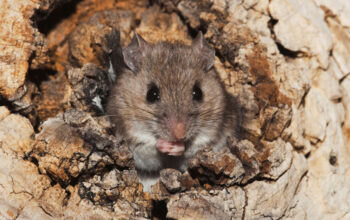
While the author has a wealth of respectful sources, it’s the queen’s words that drive the book. And that’s probably how she’d want it; she was known for the exacting attention she paid to every comma and fully aware of the implications of even the most oblique reference. Her public addresses are probably as close to a memoir as could exist. — Sadie Stein
Sept. 8, 2022, 10:30 p.m. ET
‘Queen Elizabeth II: Portraits,’ by Cecil Beaton
Beaton, a prominent fashion and society photographer, first received a request to photograph Elizabeth, who was then a teenage princess, some 80 years ago. Over the next three decades, Beaton, who died in 1980, helped to shape the monarchy’s public image through his carefully choreographed and curated portraits. He photographed the queen during some of the most significant moments in her private and public life: in a military uniform as war broke out in England; shortly after the birth of her first child, Charles, and at her coronation in 1953. The book, which contains text by Susanna Brown, a photography curator at the Victoria and Albert Museum, is as much a celebration of Beaton’s talents as of his subject, Elizabeth. — Alexandra Alter
‘Philip and Elizabeth: Portrait of a Royal Marriage,’ by Gyles Brandreth
“Biographers sometimes borrow the attitudes of their subjects,” our critic, Janet Maslin, wrote of this comprehensive examination of the royal union. “Perhaps that is why Gyles Brandreth would like you to know this about the marriage of Queen Elizabeth II and Philip, Duke of Edinburgh: what goes on between them, Dear Reader, is really none of your affair.” However: Brandreth, who knew Prince Philip for 25 years, does “spin little bits of information into long stories” and “ramble reasonably charmingly about royal history.” For instance, Brandreth writes, “Thanks to servants’ tittle-tattle (reliable in this instance) we do know that Prince Philip, in the early days of his marriage, did not wear pajamas.” — Elisabeth Egan
‘Elizabeth and Margaret: The Intimate World of the Windsor Sisters,’ by Andrew Morton
Before they were regal women waving white-gloved hands at adoring crowds, Elizabeth and her sister, Princess Margaret, were a formidable, and occasionally antagonistic pair, leading an “insulated and carefree” life, according to Morton. “The king of royal tea,” as our reviewer described him, may rely on oft-shared sagas (for instance, the particulars of Margaret’s love life), but he makes an important point: The Windsors were regular siblings before they were royals. Morton writes, “The two sisters were contradictory and conflicted, butting heads over matters both small and monumental, but they also loved one another.” — Elisabeth Egan
‘Ninety-Nine Glimpses of Princess Margaret,’ by Craig Brown
Brown’s biography of the queen’s younger sister is as irreverent and untraditional as Margaret herself. Elizabeth figures into the book mainly as a foil, with a “distrust of the unexpected” that contrasts sharply with Margaret’s taste for outlandish remarks, a bohemian crowd, scandal — and vodka and orange juice. As Brown (who recounts his own in-person meeting with the queen) described the monarch: “It was her duty and destiny to be dull, to be as useful and undemonstrative as a postage stamp, her life dedicated to the near-impossible task of saying nothing of interest.” — Joumana Khatib
‘All the Queen’s Corgis: The Story of Elizabeth II and Her Most Faithful Companions,’ by Penny Junor
Everything you always wanted to know about royal corgis but were afraid to ask! The biting of footmen! The pack power struggles! The nipping at foreign dignitaries! The illicit liaisons! (A corgi who shall remain nameless mated with one of Margaret’s dachshunds, resulting in several “dorgis.”) From the time she was 7, the future queen had a Welsh corgi trotting at her heels. Her hands-on affection for her pets — she fed and walked them, even traveled with them — provides a rare window into her life, or, at any rate, those of Candy, Disco, Pundit (yes, really), Vulcan and their generations of predecessors. — Sadie Stein



